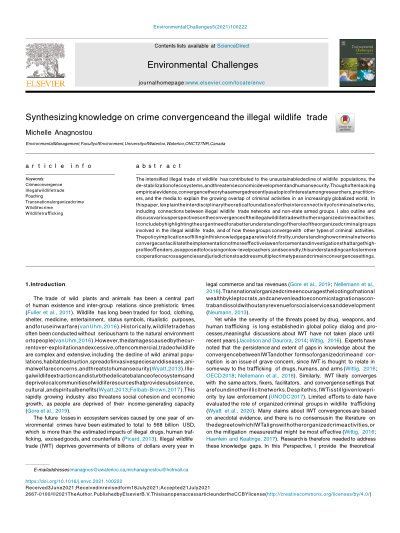By USAID Wildlife Asia
USAID Wildlife Asia is a five-year, US$24.5 million, regional counter wildlife trafficking (CWT) initiative addressing the trafficking of pangolins, tigers, elephants and rhinos in Southeast Asia and China. The USAID Wildlife Asia Activity works to address wildlife trafficking as a transnational crime. The project aims to reduce consumer demand for wildlife parts and products, strengthen law enforcement, enhance legal and political commitment and support regional collaboration to reduce wildlife crime in Southeast Asia, particularly Cambodia, China, Lao People’s Democratic Republic (PDR), Thailand, and Vietnam. TRAFFIC is a leading non-governmental organization working globally on trade in wild animals and plants in the context of both biodiversity conservation and sustainable development. TRAFFIC collaborated with USAID and many non-governmental organizations (NGOs) when researching and writing this report. This report is the third in a series, which builds on the previous USAID digests, Counter Wildlife Trafficking Digest: Southeast Asia and China, 2017, and Counter Wildlife Trafficking Digest: Southeast Asia and China, 2018. This report covers the period January to December 2019 with a focus on pangolins, tigers, elephants, and rhinos, and highlights the key developments in legislation on conservation, outlines some of the innovative social and behavior change communication (SBCC) research projects and campaigns, and then explores the seizures made in 2019. USAID Wildlife Asia and TRAFFIC regularly collect and update documentation on the current state of wildlife trafficking of these species through a compilation of secondary sources to report on and analyze trends and changes in patterns of trade. This information provides an evidence base to support decision-making about priority interventions in policy, law enforcement, and consumer demand reduction. SBCC covers the range of campaigns and the research that provides information on demand for illegal wildlife products, as well as reducing consumer demand for these goods. A wide range of remarkable SBCC projects have been implemented since the previous digest, with new collaborations between NGOs and the travel industry, and with government agencies taking an active role in reducing demand for wildlife products. This report highlights some of these SBCC campaigns along with the gaps remaining to be filled. As with previous issues, this third issue of the digest is based on a compilation of documentation, news articles, and reports that are readily available in the English language. Unlike previous digests, some information is also drawn from translated documents held in TRAFFIC’s Wildlife Trade Information System (WiTIS). Nevertheless, it is possible that some data are still missing; therefore, USAID Wildlife Asia does not assume the figures included provide a complete data set. The recommendations provided target not only USAID Wildlife Asia directly but also the broader counter wildlife trafficking community and include a focus on social behavior change, improved law enforcement, increased government commitment, political will, and effective regional coordination.
Bangkok: USAID Wildlife Asia, 69p.




















